从优秀的产品设计看游戏设计10大原则(上篇)
作者:Mark Rosewater
我经常提到Brian Tinsman对于创新的追求。这种追求不仅体现在的他的Magic游戏设计,甚至贯穿于他所从事的任何一项工作中。Brian曾经针对Wizards of the Coast(游戏邦注:位于西雅图Emerald City的游戏公司)研发部门所具有的全部资源进行了深入思考,并发现那些杰出的Magic游戏设计创意都是源自于这里(游戏邦注:他们不但开发了《龙与地下城》和《决斗王》这两款大型游戏,也创造了许多有趣的小游戏)。是否有哪一种方法能够帮助我们更好地集思广益?
最终结果便是组成了一个小组并例行参加两周一次的会议,即Brian口中的“游戏设计最佳实践团队”。研发部门的每一名设计者都受到了邀请。在每一次回忆中,不同的设计者将会选择任何与设计相关的主题,并一起花费数个小时讨论这个话题。而今天我要着重讨论的话题是我在第一次会议中所选择的主题内容。
Brain和Braun
我们那次的讨论始终围绕着Dieter Rams提出的游戏设计10大原则。让我们回到过去,从那天讨论的起始主题:“谁是Dieter Rams”开始说起。根据维基百科的解释:
Dieter Rams(在1932年5月20日出生于德国黑森邦威斯巴登市)为著名德国工业设计师,与德国家电制造商Braun和机能主义设计学派有着很密切的关系。
为何家用电器产品的设计者会与游戏设计扯上关系?可能不只少数人在思考这个问题。为了更好地理解Dieter Rams与我自己,作为游戏设计者的这种身份之间的关系,我将在以下列出我们间的几大联系:
下图是谁?他是Jonathan Ive,也是一名家电设计师,并且正效力于一家非常出名的公司,知名度甚至超越Braun,也就是苹果。
Jonathan Ive是苹果工业设计部资深副总裁,但是比起他高高在上的地位,更让我印象深刻的还是他的设计才能。以下的产品你们应该不会陌生吧,这些都是Jonathan Ive杰出的设计:
Jonathan Ive与Dieter Rams有何交集?让我们看看Dieter Rams的一些作品:
很多人认为Dieter Rams作为一名出色的工业设计师,在很多方面影响着Jonathan Ive的设计。而我认为Jonathan Ive是当代最杰出的工业设计师之一,所以我很乐意能够遵循着他的脚步一直往前走。
我可是一名纸牌游戏设计者,这与工业设计又有何关联?我的答案是“非常有关系”,因为我认为设计就是设计,无关任何设计产物。为了成为一名更为杰出的设计者,我不能只懂得游戏设计或者纸牌设计,还应该理解广义的设计理念。
今天我们要讨论的话题是关于Dieter Rams的游戏设计10大原则,以及这10大原则是如何在游戏设计以及Magic游戏设计中加以应用。如果你真心对游戏设计感兴趣,那么一定不要错过这些内容。
首先我们来看看这10大设计原则:
1)好设计具有创造性。
2)好设计具有实用性。
3)好设计具有美感。
4)好设计有助于我们了解产品。
5)好设计不会很高调。
6)好设计是诚信。
7)好设计经久耐用。
8)好设计不放过任何一个细节。
9)好设计重视与环境相协调。
10)好设计就是尽量避免“设计”。
好好掂量这10大原则,你会发现它们的确有一定的价值。以下我将一一分析这些原则。
1)好设计具有创造性。
首先我们必须先来说说创造性。怎样才能具有创造性?
1.你的创造必须是新的,或者至少是某一个领域中的一个新理念。如果你想在设计中达到创新,那么你就必须引进一些新元素。
2.这种创造性必须引起一些证明的改变。不只是新颖就足够了。新的改变必须能够引起设计过程的变化,并推动设计的发展。
3.创造性必须具有价值。也就是说这种改变必须能为设计带来一些具有价值的新鲜内容。
4.它也具有一些消极影响或者破坏性。很多时候随着新事物的引进,我们也必须淘汰一些旧事物。
5.它会导致一定的风险。改变总是需要一定的代价。
我想Ram在这里真正想要表达的是设计的真义在于前进。也就是你想要挑战一些已知的事物并采取一些潜在的方法去完善设计的每一个步骤。好的设计包含各种改变,并且在必要的时候也应该接受任何风险。我想要澄清,好的设计具有创造性,但是创造性并不是促成好设计的唯一元素。
当你将这点运用于Magic游戏中,同样的说法也是,游戏设计必须始终向前走。每款新的设计都必须好好衡量它的纸牌,机制,以及不同情境下的主题是否曾经出现过,而现在又有何变化。是否现代技术能够让我们利用一些新的优势而创作出不一样的产品?如果可以,我们又应该如何做才能够在不改变游戏本质的基础上做出适当的变化?
我认为每一款游戏设置都需要采取一些方法而达到创新:
1.每一个新设置都需要尝试一些之前从未尝试过的改变。虽然不一定是新的关键机制的改变,但是通常情况下这也是不可避免的。
2.每一个新设置都应该以一种全新的理念去改变过去或者现在的元素。有时候这种改变意味着进一步的发展,但是有时候也未必。
3.每一个新设置都应该想办法在旧理念的基础上添加一些新元素。换句话说,也就是每个新设置都应该让你能够在桥牌基础上添加新的卡片。
4.每一个新设置都应该让玩家能够转变对游戏的看法。
5.每一个新设置都应该能够创造一种属于自己的独特契机。这里所说的契机是指我在游戏设计中总是在寻找一个独特的瞬间,让我能够真正感觉到“就是这时候了”。《Zendikar》是第一款让我想要创造一片领土而不再是一堆法术的游戏。我总是让自己处身于一个完全相反的情境下,并在这种倒置的氛围里我才能够更好地意识到一个设置的真正魅力。
我想如果哪一款设置能够真正执行这5种方法,那么它一定能够带来不一样的创新。
2)好设计具有实用性。
经常地,当我在速食店的厕所里,我总是会选择使用烘干机而不是卷纸巾,很多拥有同样习惯的人会回答:这样更环保,不会浪费纸资源,并且更加卫生。但是对于我来说,只是因为“它能帮助我烘干手。”
在设计中也是相同道理,任何产品都必须具有自己的功能。如果一款设计不能够让用户有效安心地进行使用,那么这必是一款失败的产品。这里我所强调的便是,任何设计都必须围绕着产品而运转,不应该脱离产品的本质属性。
如何将这一点运用于游戏设计中?首先必须明确游戏的功能是什么。答案多种多样,而我也始终坚持于我所认可的答案:游戏的功能便是为人们创造乐趣。是的,游戏还应该刺激思维,促进交流,测试玩家等等,但是总归,如果游戏不能够提供给玩家乐趣,那这一切功能又有何意义?
我经常询问我的Magic游戏设计者,为何特别的纸牌或者机制或者设置能够让玩家感到有趣。如果他们说不出其中的乐趣,我便会让他们去“寻找乐趣的源点”或者放弃这些设计。通常,如果连设计者都搞不清楚自己制作每一张纸牌的首要目标是什么,那么他们便很容易陷入无止尽的迷茫和困惑中。
我经常提及我在《奥德赛》(游戏邦注:古希腊史诗)中学到的一些内容。在设计中,我利用了纸牌的优势,让玩家不用手便能够控制这些卡片。但是问题就在于,离开了手的控制,纸牌游戏也就不那么有趣了。但是至少玩家想要玩纸牌。所以如果我能够让他们清楚自己为何要这么做,那么不管任何游戏方法,都能够让他们开心地玩游戏了。而如果我不能让玩家想要尝试游戏,那么我就是个失败的设计者。
3)好设计具有美感。
美学是我经常谈及的另外一个话题,也是设计中非常重要的一部分。简要概括所谓的美学:如果一件问题让我们“感觉不错”,我们便会在意它。有些特性会造就舒适,也有一些会引起不适。
美学的作用是帮助一件物品博得人们正面的回应。美学是一门学科,能够更加客观地为我们判别一件物品的好坏,而不只是凭借我们独断的猜测。从生物学的角度来看,人类总是在渴求一些事物,如平衡性,结构性和完整性等等。而对于设计者来说,他们更加需要理解美学,因为这将深刻地影响着他们的设计会得到怎样的反馈。
对于任何一种艺术来说,很重要的一部分便是学习艺术规则。就像画家必须了解透视图,摄影师必须掌握光线,作家必须知道如何构造故事。而等等的这些规则都是来源于美学。也就是图画,照片或者故事等都必须让观众能够有种“感觉不错”的反应。
游戏设计也不例外。游戏也必须让玩家“感觉不错”。特别是对于Magic游戏,我们必须了解那些表面上看起来不重要的许多因素。包括我们需要使用多少特殊机制以及我们是如何为其上色和布置。其中也包含我们设置了什么能力等。当设计者在纸牌上添加或者删减了某些元素后,他们必须知道这些纸牌能够带给玩家何种感觉。
美学同时也帮助我们更加谨慎地处理那些即将用于纸牌中的不同元素。最典型的例子便是我们如何使用数字。我们都很清楚什么数字会出现在纸牌上,以及什么时候这些数字间会产生关联性。举个例子来说,如果一个生物在进入战场时拥有3个破坏点,我们将会让这个生物拥有3个级别的能力,因为我们希望这个生物在进行游戏时具有“攻击性”。
通常情况下,如果纸牌上的一些数字相互匹配,我们也会想办法让其它数字也搭配起来。几周前,我解释了我们是如何谨慎处理平等派中的能量/强度的结合,从而让游戏的进程更加自然。虽然这些内容看起来都不起眼,但是当它们适当地结合在一起之时,便能够让整体的游戏设置看起来更加合理,适当。
4)好设计有助于我们了解产品。
我最欣赏苹果产品设计的一点便是,它总是能够满足我们的任何一种期待。苹果设计者总是很重视用户的期待,以及他们的产品是否能够满足用户的这种期待。这种观念对于设计来说很重要,我将其称之为“回形针效应”。当你第一次看到回形针时,你会很自然地想到这就是一种用来别住多张纸的工具。这便是一目了然的设计原则。同时也包含了它的目的,也就是它的使用方法。即让使用者能够清晰地知晓它的作用。
Rams同样也提到了,对于设计来说,用法说明也是非常重要的一大因素。在设计一件物品的同时你也应该向用户解释它的使用方法。我们很容易会把设计误解成是一种简单的装饰,只是尝试着创造一种外观好看的物品。所以在此,Rams是在提醒设计者,他们在传达外观的同时也必须传达相关信息。
这点在Magic游戏中特别重要,因为在交易类纸牌游戏中便带有很多局限性。设计者并未掌控玩家在游戏中的顺序。这就意味着他们必须谨慎地处理游戏中的任何进程。而最好的方法便是使用一些普遍卡片。这些卡片可谓是游戏设置的主干线,因为它们的数量很多。如果设计者想要传达游戏设置的相关信息,那么他们就必须确保这些信息的清晰明了。就像我常说的,如果你的主题不够明显,那么那就不是你的主题。
好的Magic游戏设计必须能够传达信息。通常通过2个方法进行传达。首先是纸牌与纸牌间的信息传达。每张纸牌上都有许多地方可以用于提供各种信息,包括规则文本,纸牌的型线,能量/强度,标题,艺术,趣味文本等。设计者还必须清楚什么时候应该使用哪一部分内容等。
以下我将列出一些用于传递设置信息的道具:特殊的物品,颜色,周期,反响等。传达游戏设置的一部分内容是设置平行纸牌从而强化你的游戏主题。你需要记住,玩家共有5次机会能够找到传统的5色周期,而不只是单一的纸牌。
设计者不应该只是了解产品本身,而应该能够描写或解释他的设计。当用户首次接触你的产品时,也就只有你的产品能够帮助你传递所有的信息了。
5)好设计不会很高调。
当我来到好莱坞的第一年,我只能作为一名勤杂工,说得好听点就是产品助理。而这个角色正是位于好莱坞“食物链”的最底层。你必须执行任何上级所指派的任务。
在Lee Curtis和Richard Lewis主演的电影《Anything but Love》中,我的工作就是产品助理。某一天我被叫到一个制作人的办公室。这个制作人的工作便是监督我们这些助理。他让我进入办公室并坐下,然后跟我说最近有一些人对我抱怨连连。我便很惊诧,难道我做得不够好?不可能,因为我自认为都很好地完成了任务。还是我没能完成某些任务?也不对,因为我都按照要求执行了相应的任务了。还是我做了一些不该做的事?没有吧,我从来不会轻易逾越。那么我就纳闷了,我到底哪里做得不好?他随后说道,问题便在于,我的行为太过于显眼。
太显眼?这是什么意思?他解释道,作为一名助理,就必须尽可能低调地执行任务。他们不应该被注意到。而我则拥有太多主见,所以很容易被关注到。这种行为在别人眼中也许太过碍眼了吧。
那时候我对此感到非常沮丧。因为我之所以选择从事低级别的助理,正是希望能够借此不断攀升。我希望得到别人的注意。直到许多年过后,我才明白这位制作人的意思。作为一名有效能的助理,我的工作便是完成所有要求。而不应该奢望得到任何关注。我应该默默地完成我的所有工作。因为我的角色是促成所有大工作中的一小块零件,所以我应该无形地存在于基层中。
从我的角度来看,我选择这份工作的目的很明确,只是希望能够以此为跳板转移到其它工作中。但是在制作人眼中,情况就完全不一样了。他希望我能够按照他的要求完成一切任务,但是我却做不到默默无闻。我想要尽一切可能地凸显自己,但是因此我便无法适应这个圈子。
让我们再次转到Magic游戏设计中。任何一张个体纸牌的角色便是满足游戏设置的需要。纸牌的首要职责是服务于设置,而非自己。对于设计者来说,最难的工作便是应对一张不轻易服从的可怕纸牌。如果这张纸牌凸显于其它纸牌中,那么它便破坏了整体的游戏设置。设计者的工作其实就像是之前提到的制作人,他必须监督着游戏系统的整体运行。是的,对于纸牌来说,设计者约束了它们的发挥,但是从设计角度来看,比起个体纸牌的需要,整体目的更加重要。
我认为Rams在此的观点是,所有因素都应该首先满足于设计的需要。如果任何一个因素凸显于设计之上,那么它将会严重破坏整体的设计感。这个观点不论是在制作灯具,播放器还是在Magic纸牌中都同样适用。
游戏邦注:原文发表于2010年5月3日,所涉事件和数据均以当时为准。(本文为游戏邦/gamerboom.com编译,拒绝任何不保留版权的转载,如需转载请联系:游戏邦)
The Ten Principles for Good Design, Part 1
Mark Rosewater
I often talk about Brian Tinsman’s love of innovation. This doesn’t apply to just his Magic design, but to pretty much everything he gets his hands on. One day Brian was thinking about all the design resources of Wizards of the Coast R&D. Remember, that Magic is but one thing we create here (Dungeons & Dragons and Duel Masters the two big other products, but there are numerous smaller games created here as well). Was there a way to better synergize all this design talent?
The end result was the bi-weekly meeting of a group Brian called the Game Design Best Practice Team. Every designer in R&D was invited. Each time, a different designer would choose any design-related topic and use the hour meeting to talk about it. Today’s column was the topic I chose when I ran my first meeting.
Brain and Braun
My hour was all about the 10 Principles for Good Design as proposed by a man named Dieter Rams. I’ll start with where I started that day: who in the world is Dieter Rams?
According to Wikipedia:
Dieter Rams (born May 20, 1932 in Wiesbaden, Hesse) is a German industrial designer closely associated with the consumer products company Braun and the Functionalist school of industrial design.
What does a man who designed consumer electronics have to do with game design? As you will see, a lot more than one might think. To understand the connection between Dieter Rams and myself, let me show you the key connection:
Who is this? This is a man named Jonathan Ive. He too designs consumer electronics products, although for a company that many of you might be more familiar with than Braun—a little company called Apple.
Jonathan Ive is the Senior Vice President of Industrial Design at Apple. More impressive to me than his qualifications, though, are his designs. Perhaps you’re familiar with some of them:
What does Jonathan Ive have to do with Dieter Rams? Let’s take a look at some of Dieter Rams’s work:
Many believe that Dieter Rams is the industrial designer that has had the greatest influence on Jonathan Ive’s work. I believe Jonathan Ive to be one of the greatest modern industrial designers, so following this path of influence is of great interest to me. (If you’re unfamiliar with my love of Apple, check out my article where I professed it. By the way, for those who care: I did get an iPad the day it came out, and I’m loving it. It is very much, I believe, the direction of the future.)
Wait, wait, wait. I’m a card designer. What does that have to do with industrial design? My answer is “a lot,” because I believe that design is design regardless of what is being created. To be a better designer, I have to understand not just Magic design or card design, but the concept of design in general.
Today’s column (and the one in two weeks—it’s a two-parter) is looking at Dieter Rams’s 10 Principles for Good Design and talking about how the ten principles apply to game design and Magic design in specific. If you are truly interested in design, I think today’s column is an important one.
Let me start by showing you the list:
Dieter Rams’s Ten Principles for Good Design
1) Good design is innovative.
2) Good design makes a product useful.
3) Good design is aesthetic.
4) Good design helps us to understand a product.
5) Good design is unobtrusive.
6) Good design is honest.
7) Good design is durable.
8) Good design is consequent to the last detail.
9) Good design is concerned with the environment.
10) Good design is as little design as possible.
Take a moment to sink it all in. These ten principles carry a lot of weight. When you’re ready I’ll walk through them one by one.
1) Good design is innovative.
It’s hard to discuss this point without first discussing innovation. What exactly makes something innovative?
1.It has to be new, or at least new to the field in question. When you innovate in design, you bring a new element or elements to the table.
2.It has to bring about positive change. It’s not enough for something to just be new. The new thing has to change the design process in a way that moves the design forward.
3.It has to add value. That is, the change has to add something to the design that did not exist prior to its introduction.
4.It often has a negative or destructive effect. Most often when something is added, something else is taken away.
5.It tends to add risk. Change always comes at a cost.
The point I think Rams was trying to make here is that design is about moving forward. At each step you have to be willing to challenge what you know and examine potential ways to improve the design. Good design involves embracing change, when necessary, and being willing to accept risk. I will make the important distinction that good design is innovation, but innovation isn’t enough for good design.
When you apply this to Magic, what it is saying is that Magic design must keep moving forward. Each new design has to think about its cards and mechanics and themes in the context of not just what came before, but what can be done now. Does modern design technology allow us to approach things from a new vantage point? If so, how can we make changes that advance the game without pulling it away from the core of its essence?
I believe every Magic set needs to innovate in several ways:
1.Every new set should do something that hasn’t been done before. This doesn’t necessarily have to be as big as a new keyword mechanic, but more often than not it will be.
2.Every new set should bring back something from the past and present it in a new light. Sometimes this will mean further evolving it, but not always.
3.Every new set should find ways to add new elements to old ideas. Another way to think of this is that every new set should give you new cards to add to your old decks.
4.Every set should make players have to shift their thinking about the game in some way.
5.Every set should create a moment that is uniquely its own. What I mean by this is that in design I’m always on the lookout for the moment when you realize that this environment has its own feel. With Zendikar, it came the first time I found myself hoping to draw a land rather than a spell. I had been in the opposite situations a large number of times, and to see the situation reversed made me realize that the set was hitting on something cool.
I believe that if a set can accomplish these five tasks, it is bringing innovation to the design.
2) Good design makes a product useful.
Often when I’m at the bathroom of a fast food restaurant, I find myself forced to dry my hands with a hand dryer. It always has some sign that explains the many reasons it’s superior to a roll of paper towels: it’s better for the environment, it doesn’t create waste, it’s more hygienic. My response has always been, “If only it dried my hands!”
In design, form does, in fact, have to follow function. When design gets in the way of the consumer being able to use the product effectively, it is failing. This point stresses that design is supposed to work with the product and not against it.
To apply this to game design, you simply have to define what the function of a game is. While there are numerous answers, I’ll stick with my favorite: a game’s function is to be fun. Yes, it should stimulate the mind, it should enable socialization, it should test the player—it should do all sorts of things, but in the end, if the players aren’t enjoying themselves, nothing else matters.
I often ask my Magic designers to explain to me why a particular card or mechanic or set will be fun for the players. If they can’t explain to me what is fun about it, I tell them to “find the fun” or scrap it. Too often a designer can get lost in the intricacies of making a card work that they lose sight of why they’re making the card in the first place.
I often talk about the lesson I learned from Odyssey. In the design, I turned the concept of card advantage on its ear making it the correct play much of the time to throw away your hand to activate an ability you didn’t even care about. The problem is that throwing away your hand isn’t fun. Players want to play their cards. It didn’t matter if I could make them understand strategically why they might want to do it. If I can’t get them to want to do it, I, as a designer, have failed.
3) Good design is aesthetic.
Aethetics is another topic I touch upon from time to time as it’s such an important part of design. For a quick refresher, click this link to my a Zen and the Art of Cycle Maintenance. In it, I explain the basics of aesthetics. The short version for those who don’t want to hit the link is this: When perceiving things, humans care a great amount about if the object in question “feels right.” Certain qualities create comfort, while others create discomfort.
The role of aesthetics is understanding what generates a positive response from people. The science of aesthetics has told us that these qualities are much more objective than one might assume. Biologically, humans are wired to crave certain things: balance, structure, completion, etc. Designers have to understand aesthetics because it has a huge impact on how their designs are received and perceived.
A big part of any art is learning the rules of that art. Painters have to understand perspective, photographers have to understand light, writers have to understand story structure. Most of these rules come from the lessons of aesthetics. What does a painting or a photograph or a story have to do to “feel right” to the audience?
Game design is no different. Games have to “feel right.” For Magic, this means that we have to be conscious of many factors that might not seem important on the surface. This includes things like being careful how much we use a particular mechanic and where we put it in color and rarity. It also includes what abilities we put together. Designers have to be very conscious about the overall feel of a card as they add or subtract elements.
Aesthetics also makes us very careful about how we use different elements on a card. The best example of this would be our use of numbers. We are very aware what numbers appear on a card and when those numbers feel as if they want to have relevance to one another. For example, if a creature deals 3 damage when it enters the battlefield, we strongly push towards making the creature have a power of 3, as we want to create the feel that the creature is “attacking” as it enters play.
Often when several numbers on the card match we push to line up other numbers as well. Several weeks ago, I explained how we were very careful about what power/toughness combinations we used on the levelers to make their progression feel right. All of these things might seem small in a vacuum but the combined effect of caring about all these small things is that the sets have the right feel.
4) Good design helps us to understand a product.
One of the things I love about Apple’s design is that things tend to work the way you think they would work. The designers at Apple take great care to match expectation. This concept is so important to design that I’ve nicknamed it; I call it the Paperclip Effect. The first time you are shown a paper clip, it feels natural. So natural, in fact, that it becomes hard to imagine any other way to temporarily hold multiple pieces of paper together. That’s the sign of clean design. It so encompasses its purpose that it eclipses the idea that it is but one way to do it. It feels like the way, not a way.
Rams is also talking, I believe, about the importance of a design serving as instruction. The object needs to be designed such that its very form explains how it is used. It’s easy to think of design solely as cosmetic, to create the prettiest version of whatever it’s trying to be. With this principle, Rams is reminding the designer that they trade in information just as much as image.
This is especially important in Magic because of the limitations of trading card games. The designer does not control in what order the player experiences the game. This means that great care has to be taken to communicate what is going on. The biggest way this is accomplished is by use of common cards. These cards are the backbone of the set, because they will exist in the largest volume. If the designer wants to send a message about what the set is about, that message has to live in common to ensure that it will be seen. As I often say, if your theme isn’t in common, it isn’t your theme.
Good Magic design has to convey information. This is done in two ways. First is the card-by-card information. Each card has numerous places to provide information: the rules text, the card type line, the power/toughness, the title, the art, the flavor text, etc. The designer has to understand when each part can and should be used.
Next are the tools used to communicate information about the set: rarity, color, cycles, reflections, etc. Part of conveying things about your set is setting up parallel cards that reinforce your themes. Remember that a player has five times more chance to see a traditional five-color cycle than a single card.
A designer has to always be conscious not just of what the product is, but of what its design says as an introduction. When someone sees your product for the first time, it will be up to your product to convey your message.
5) Good design is unobtrusive.
During the first few years I was in Hollywood, I worked as a runner. (You can read all about my runner days in my column Tales of a Runner.) Also called a production assistant or a “go-fer” (as in”go fer” this and “go fer” that), a runner is the lowest person on the Hollywood food chain. You basically do whatever errands you are told to do.
One of my jobs was as a runner on the show Anything but Love starring Jamie Lee Curtis and Richard Lewis. One day I was called to the office of one of the producers. It was his job to oversee the runners. He called me in and told me to take a seat. He explained that there had been some complaints about me. Was I not doing my job efficiently? No, I was doing a good job. Was I failing to perform some task? No, I was doing everything asked of me. Had I done something I wasn’t supposed to do? No, I hadn’t stepped out of bounds. Then what was I doing wrong? The problem, he said, was that I was too visible.
Too visible? What did that mean? He explained that part of a runner’s job was to be as low-key as possible. A runner was not supposed to be noticed. I had too much personality. I was getting noticed. I wasn’t unobtrusive.
At the time I was pretty upset. The whole reason I took the low-level runner job was to work my way up. I was trying to get noticed. It wasn’t until many years later that I began to understand what he was saying. To be an effective runner, I had to fulfill all requirements of the job. An important one was that I wasn’t supposed to pull focus. I was supposed to do my job without causing any disruption. I was supposed to be invisible, because my job in the big picture was a supporting one.
It’s very easy to see the job from my perspective. I was using it to try and move on to something else. The harder part is to see it from the producer’s perspective. He had a need that had to be filled. I wasn’t giving him everything he needed. Instead of fitting into the organization, I was trying to stand out. It was problematic.
Let’s apply this to Magic design. The role of any individual card is to serve the needs of the set. The card’s first duty is to the set, not to itself. One of the hardest things for designers to do is to pull the awesome card that isn’t quite doing what it’s supposed to be doing. The problem is that the card is less important than the set. If the card pulls focus, it disrupts the set. A designer’s job, much like that producer, is to look at the system as a whole. Yes, it’s disruptive from that card’s perspective, but the design has a purpose much larger than an individual card’s need.
I think Rams’s major point here is that all the elements have to serve the design first and foremost and no other. The second any one element puts itself above the design as a whole, it jeopardizes the design. This is true in making lamps or record players, and it’s true in making Magic cards.(source:wizards)
上一篇:创意价值有限 千里挑一才是关键

























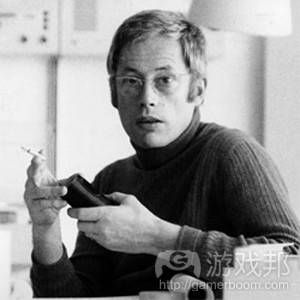
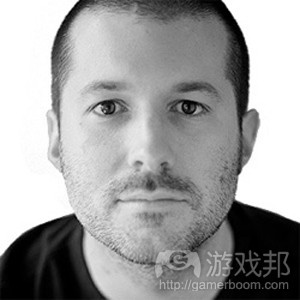

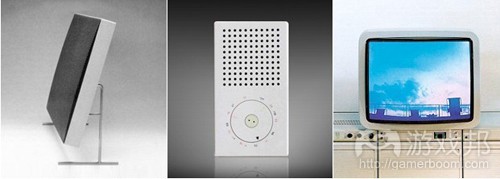
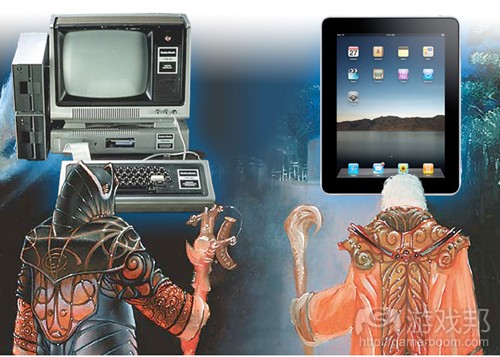
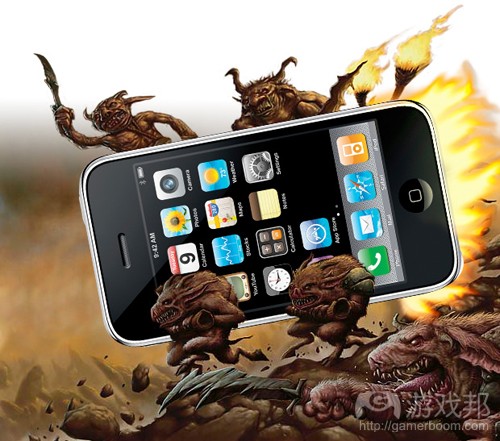

















 闽公网安备35020302001549号
闽公网安备35020302001549号